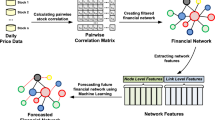Abstract
Sharpe ratio and information ratio have been widely used to evaluate mutual fund performance. Both measures compare fund returns to those of certain benchmark portfolios, such as the risk-free rate or the mean return to a pre-designated market index, respectively. Israelsen finds that both measures could generate anomalous ranking when fund returns are negative, and proposes a refined solution. The proposed refinement, however, produces fund rankings that are not necessarily consistent with the dominance rules in mean-variance analysis. This paper proposes a new performance measure, efficiency ratio (ER), which uses the global minimum variance portfolio as the basis for comparison. The ER measure is shown to correct the inconsistency found in Israelsen's modified information ratio.




Similar content being viewed by others
References
Israelsen, C. L. (2005) ‘A Refinement to the Sharpe Ratio and Information Ratio’, Journal of Asset Management, 5, 423–427.
Jorion, P. (2003) ‘Portfolio Optimization with Tracking-Error Constraints’, Financial Analysts Journal, 59, 70–82.
Merton, R. C. (1972) ‘An Analytic Derivation of the Efficient Portfolio Frontier’, Journal of Financial and Quantitative Analysis, 7 (September), 1851–1872.
Roll, R. (1992) ‘A Mean/Variance Analysis of Tracking Error’, Journal of Portfolio Management, 18, 13–22.
Sharpe, W. F. (1966) ‘Mutual Fund Performance’, Journal of Business, 39 (1), 119–138.
Treynor, J. L. and Black, F. (1973) ‘How to Use Security Analysis to Improve Portfolio Selection’, Journal of Business, 46 (January), 66–86.
Author information
Authors and Affiliations
Corresponding author
Appendices
Appendix A: Proof of Theorem 1
Merton's (1972) Two Funds Separation Theorem points out that any MV-efficient portfolio may be obtained from combinations of any two minimum-variance portfolios. Two such points are the GMVP, denoted G, and another portfolio, Q, that is orthogonal to the zero-return minimum-variance portfolio. Given these two points and the relation between the two special points, one can obtain the mean return and variance on any frontier portfolio P through a linear combination of G and Q portfolios. The investment weights for any portfolio P, X P , may then be determined by linear combination of the investment weights for G and Q, which is denoted as X G and X Q , respectively. The solution to X P and its variance are shown in Equations (A.1) and (A.2)


Letting Δ1=μ
P
−μ
G
and Δ2=σ
P
2−σ
G
2, we may rewrite Equation (A.2) as dΔ2=Δ12, which shows that the constant d is the squared ER value for all minimum-variance portfolios. The term d also determines the magnitude of risk premium in a security market. The greater the security market's d value is, the higher the reward for risk. Taking squared root on both sides of Equation (A.2), it may be shown that the value,  , is the maximum ER value all portfolios can achieve:
, is the maximum ER value all portfolios can achieve:
Theorem 1
-
When the ER for any portfolio Q is defined as in Equation (4), the ER for the portfolio will not exceed the market's efficiency ratio
 ; that is,
; that is,  .
.
Proof
-
Suppose portfolio Q is not efficient, which has identical variance to that of the efficient portfolio P. In other words, μ P >μ Q and σ P =σ Q . The ER measure for Q is then

Appendix B: Proof of Theorem 2
Roll (1992) analyses the impact of incorporating a TE constraint into the portfolio management process. Denoting the given level of TE as σ E 2=T1, Roll obtains the following equations:


According to these equations, managers can produce higher returns only through incurring higher levels of TE. Although high TE potentially increases portfolio returns, it would also increase the overall risk of the portfolio.
Letting  from Equation (B.1), and substituting it into Equation (B.2) yields the expression: (μ
P
−μ
B
)2+2Δ1((μ
P
−μ
B
))=d(σ
P
2−σ
B
2). Rearranging this expression by completing the squares, and noting that (μ
P
−μ
B
) +Δ1=μ
P
−μ
G
), yields Equation (B.3) below:
from Equation (B.1), and substituting it into Equation (B.2) yields the expression: (μ
P
−μ
B
)2+2Δ1((μ
P
−μ
B
))=d(σ
P
2−σ
B
2). Rearranging this expression by completing the squares, and noting that (μ
P
−μ
B
) +Δ1=μ
P
−μ
G
), yields Equation (B.3) below:

Theorem 2
-
When the ER P for any passive portfolio is defined as in Equation (8), the efficiency ratio for the passive portfolio will not exceed the benchmark efficiency ratio
 ; that is,
; that is,  .
.
Proof
-
Suppose an inefficient portfolio Q with a variance identical to that of an efficient portfolio P relative to the TE-constrained frontier. In other words, μ P >μ Q and σ F =σ Q . The ER P measure for portfolio Q is then

Rights and permissions
About this article
Cite this article
Chen, WK., Chen, YJ. & Chen, TC. Using efficiency ratio to measure fund performance. J Asset Manag 8, 352–360 (2008). https://doi.org/10.1057/palgrave.jam.2250088
Received:
Revised:
Published:
Issue Date:
DOI: https://doi.org/10.1057/palgrave.jam.2250088





 ; that is,
; that is,  .
.
 ; that is,
; that is,  .
.